Making the decision to install grass in your outdoor space is no small feat. Different types of grass come with various levels of maintenance, temperature preferences, and cost. Homeowners may have a hard time choosing between St. Augustine Grass and Centipede Grass because both options have their own advantages and disadvantages. In this blog post we will compare St. Augustine Grass and Centipede Grass, highlighting important information such as their growing details, popular uses, common pests or diseases they may be susceptible too, cost comparison data and much more! Read on to learn about which one might be a better choice for you!
Table of Contents
What Is St. Augustine Grass?
St. Augustine grass, which is also called Buffalo Grass, is a type of lawn grass that thrives in warm weather. It is commonly found in tropical and subtropical parts of the world. It grows best in a hot humid climate with plenty of moisture but can tolerate some drought conditions. St. Augustine grass has broad blades that form a thick lush turf when maintained properly. It is extremely tolerant of salt and shade, making it ideal for coastal areas and shady yards alike. [1]
What Is Centipede Grass?
Centipede grass is a warm-season turfgrass that thrives in humid climates. Although originally native to Asia and Africa, it has now gained a foothold in the southeastern region of the United States. Centipede grass requires minimal care compared to other warm-season turfgrasses and does not require frequent mowing or fertilizing. It can be mowed as low as 1.5 inches, tolerates moderate foot traffic, and resists weeds better than other warm-season grasses. However, centipede grass has a shallow root system and poor tolerance of cold temperatures and drought stress.
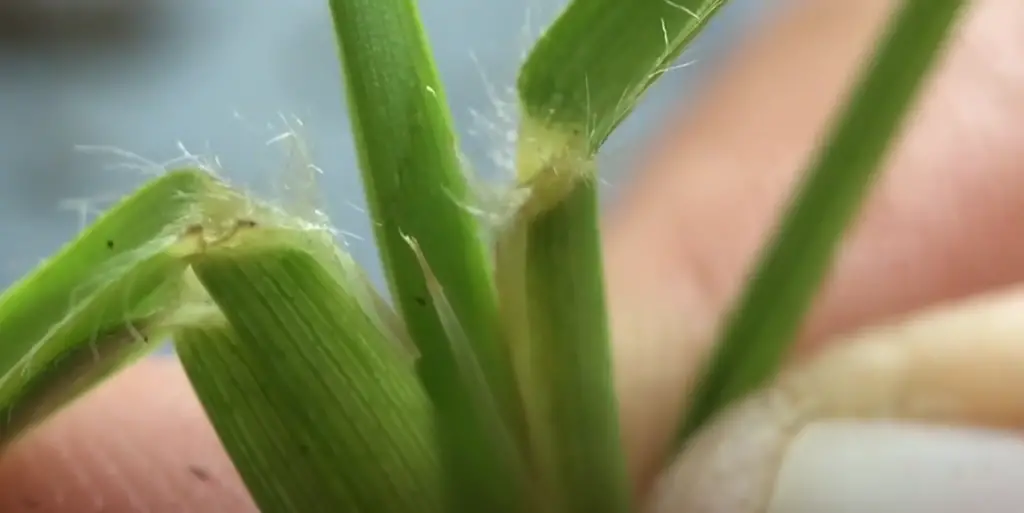
Comparing Centipede Grass vs St. Augustine
Appearance
St. Augustine grass has a very coarse texture making it more suited for high-traffic areas than Centipede Grass which is finer and softer to the touch.
Tolerance
Both types of grass are able to handle some shade, however St. Augustine can handle more shade than Centipede grass. Once Centipede grass has been established, it does not need additional watering, making it more drought-tolerant. [2]
Maintenance Requirements
Both St. Augustine and Centipede grass have maintenance requirements that vary based on the climate they are grown in. However, in general, St. Augustine grass needs to be mowed and fertilized more frequently than Centipede grass. This is because St. Augustine grass grows faster and has larger blades. However, if you are looking for a low maintenance grass option, Centipede grass is certainly the better choice.
Insects Disease
Both types of grass are known to have some susceptibility to certain type of pests and diseases. St. Augustine is more susceptible to chinch bugs while Centipede is more prone to leaf spot. However, with proper maintenance both types can be kept healthy and strong with little difficulty.
Best Uses
St. Augustine grass can be used on residential lawns, commercial sites, sports fields, golf courses, and other areas where a thicker, more durable turf is desired.
Centipede grass is a low-maintenance grass species with medium to light density that performs best under moderate temperatures and humidity levels. It’s resistant to most pests and diseases but requires less water than other turfgrasses making it ideal for dry regions or areas that experience droughts. It is often used in residential lawns and other areas that don’t require a lot of foot traffic or activity, such as parks and golf courses with light play. [3]

Soil Types and pH Needs
St. Augustine grass does best in moist, well-drained acidic to slightly alkaline soils with a pH range of 5 to 8.5. It is not very tolerant of salt and needs frequent watering during periods of drought or high heat. Centipede grass is more tolerant of acidic soil than other turfgrasses making it an ideal choice for lawns in areas with poor drainage or sandy soils. It requires fewer nutrients than St. Augustine and can tolerate a wider range of pH levels, including acidic conditions as low as 4.5.
Water Needs
St. Augustine is considered a moderately drought-tolerant species, but still requires regular watering to stay healthy and green. Centipede grass has higher water requirements than other turfgrass species and needs frequent watering during dry periods to remain lush and green.
Durability
St. Augustine grass is known for its durability and ability to withstand wear and tear from foot traffic, making it the ideal choice for sports fields, playgrounds, parks, and other areas with high activity levels. Centipede grass may struggle in these conditions due to its weaker rhizome system that makes it susceptible to damage.
Mowing Needs
St. Augustine grass requires frequent mowing to keep it looking neat and tidy. It should be mowed at a height of 2-4 inches for best results. On the other hand, Centipede grass is more drought tolerant and requires less maintenance than St. Augustine, making it ideal for areas with limited resources or those that don’t have enough time to devote to lawn care. Centipede grass should be mowed at a height of 1-2 inches for best results.
Overall, both St. Augustine and Centipede Grass are great choices for lawns depending on your particular needs and climate conditions. However, if you’re looking for a tough turfgrass that can withstand high activity levels, St. Augustine is the better choice. On the other hand, if you’re looking for a low-maintenance grass with better drought tolerance, Centipede Grass is the way to go. Ultimately, it comes down to personal preference understanding your particular climate needs. [4]

Types of Grass Related to Centipede Grass
Centipede grass is part of the Eremochloa genus, which includes several varieties of warm-season grasses. Other grasses similar to Centipede include St. Augustine Grass, Seashore Paspalum, Zoysia Grass, and Bermudagrass. All of these warm-season turfgrasses have distinct characteristics that distinguish them from one another.
St. Augustine Grass is a popular type of grass in Southern states due to its resistance to cold temperatures and warm climates. It grows thickly and produces large amounts of shade during hot summer months. It can also tolerate low levels of traffic, making it suitable for common areas where people walk or play sports on a regular basis.
Zoysia Grass is perhaps most popularly known for its thick growth habit and ability to crowd out weeds from lawns. It prefers partial shade but can also tolerate full sun and consistently moist soil. Zoysia Grass is resistant to wear and tear, making it a popular choice for homeowners who want an attractive lawn with minimal effort.
Finally, Bermudagrass is the most cold-tolerant of all of these grasses, making it ideal for locations with long winters or cooler temperatures year-round. Bermudagrass has a very fine texture, so it doesn’t require as much frequent mowing as other types of turfgrass. [5]
Types of Grass Related to St. Augustine
When it comes to choosing the right grass for your lawn, St. Augustine is often a popular choice due to its ability to withstand high temperatures and humidity levels. But if you’re looking for something that is less maintenance and isn’t labor-intensive, there are other types of grass that can provide similar benefits such as centipede, zoysia, Bermuda, and Buffalo grasses.
Centipede grass is also a warm-season turfgrass that has become increasingly popular due to its low maintenance needs. Similar to St. Augustine, it grows best in full sun but can survive in shaded areas with some care from homeowners. It does not tolerate heavy foot traffic or frequent mowing which makes it best suited for areas that don’t usually see a lot of foot traffic such as in front and back yards. Its light green-colored blades tolerate drought better than St. Augustine grass and require less fertilizer.
Bermuda grass is another warm-season turfgrass that is widely known for its ability to withstand heavy traffic and frequent mowing. It grows well in full sunlight and even thrives with temperatures over 90°F (32°C). The downside of this type of grass is that it requires more fertilization and watering compared to other types of turfgrasses.
Buffalo grass is similar to Bermuda grass but has thinner blades with a light blue-green color and does not handle foot traffic as well. It is also a warm-season grass that likes full sun and moderate amounts of water.
Zoysia grass is a slower growing turfgrass but will thicken when established, making it highly resistant to weed invasions. Its dark green color makes it an attractive choice for lawns and its ability to tolerate heavy traffic makes it popular among homeowners as well. However, Zoysia does not tolerate shade or high levels of humidity, so if you’re looking for something that can grow in those areas, look elsewhere. [6]
Pros and Cons of St. Augustine Grass
St. Augustine grass is a popular turfgrass in warm-season climates. It’s known for its ability to tolerate high temperatures and humidity, as well as drought conditions. It also helps to reduce soil erosion, provides good coverage over large areas and is relatively disease resistant. However, there are some drawbacks associated with this type of grass that homeowners should consider before planting it on their property.
Pros:
- Tolerant of extreme heat and humidity
- Good for erosion control
- Drought tolerant
- Disease resistant
- Easy to maintain with regular mowing and fertilizing
- Requires minimal irrigation once established
Cons:
- Susceptible to certain diseases such as gray leaf spot
- Can be difficult to establish in cold climates
- Susceptible to weeds and pests
- Slow recovery time from damage due to its shallow root system
- Requires a high level of maintenance to stay healthy and lush looking.
Ultimately, St. Augustine grass is an excellent turfgrass choice for homeowners living in warm climate regions. However, it does require regular maintenance and may not be suitable for colder climates. It’s important to weigh the pros and cons before deciding whether or not this type of grass is right for you.
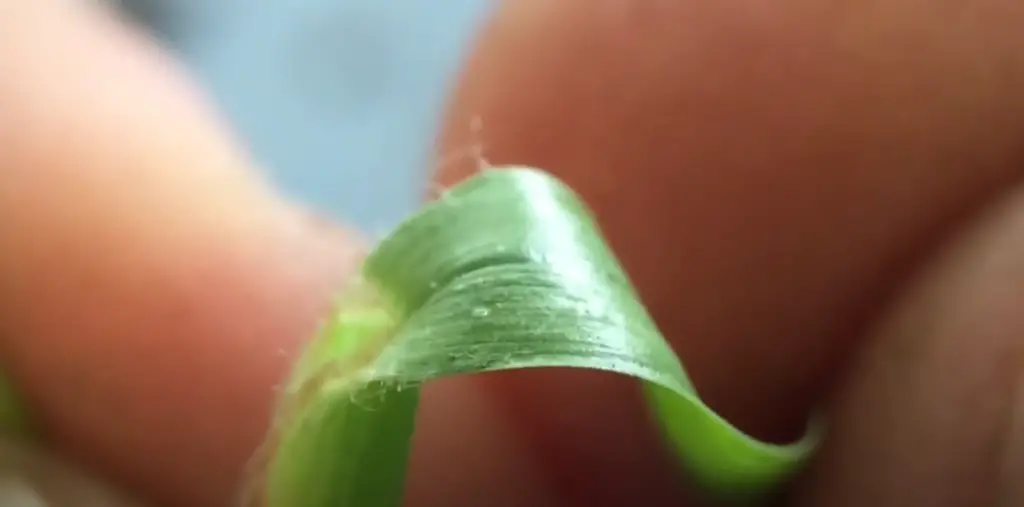
Pros and Cons of Centipede Grass
Centipede grass is a warm-season grass that’s popular in the southeastern United States. It’s very low maintenance and requires little fertilization or irrigation, making it a great choice for homeowners who don’t want to spend a lot of time taking care of their lawn. However, there are some drawbacks associated with this type of grass as well.
Pros:
- Low maintenance
- Requires minimal fertilizing and irrigation
- Drought tolerant
- Can tolerate high temperatures and humidity
- Generally disease resistant
Cons:
- Susceptible to certain diseases such as brown patch and take all root rot
- Difficult to establish from seed – has to be planted from plugs or sprigs
- Susceptible to damage from heavy foot traffic
- Poor shade tolerance
Centipede grass is an excellent choice for homeowners looking for a low maintenance turfgrass that can handle warm climates. However, does have some drawbacks and may be suitable for cooler climates or trafficked areas. Before planting this type of grass, homeowners should consider the pros and cons to make sure it’s right for their needs. [7]
FAQ
What grass is better than St. Augustine?
Centipede grass may be a better option for certain areas. Centipede grass can withstand lower temperatures and requires less maintenance than St. Augustine, making it ideal for cooler climates. It is also more tolerant of droughts and other environmental stresses, so it is often the preferred choice for areas with drier conditions.

What are the differences between St. Augustine Grass and Centipede grass?
St. Augustine grass has a wider blade that grows thicker and faster than centipede grass, while centipede grass has a finer blade that only grows up to two inches tall. St. Augustine is best suited to warmer climates with moderate amounts of rain, while centipede prefers full sun in cooler climates with higher levels of rain. In terms of maintenance, St. Augustine requires more frequent mowing and fertilizing, while centipede needs less maintenance to keep it looking healthy.
What are the advantages of using Centipede grass?
Centipede grass has several benefits over St. Augustine grass. It is easier to maintain as it requires less water, fertilizer and mowing than St. Augustine grass does; it is also more tolerant of droughts and other environmental stresses. Additionally, centipede can withstand lower temperatures and its finer blade makes it an attractive option for those who prefer a softer lawn look. Finally, centipede grass spreads slowly so you don’t have to worry about out-of-control growth in your yard!
What are the disadvantages of St. Augustine grass?
St. Augustine grass is not the most drought-tolerant turfgrass and is more susceptible to damage from hot, dry weather than centipede grass. In addition, St. Augustine grass needs more nitrogen fertilizer than other turfgrasses and is vulnerable to disease, especially during wet seasons. Additionally, it tends to grow quickly in warm climates and requires frequent mowing to keep a neat appearance, which can be labor-intensive for homeowners. It can also spread aggressively into flower beds or other areas of the lawn if not carefully managed. Finally, St. Augustine grass has a shallow root system that makes it prone to erosion or compaction on slopes or hillsides.
Is St. Augustine a good lawn grass?
Overall, St. Augustine grass is an attractive lawn grass that thrives in warm climates and can be maintained with minimal effort. However, it has its disadvantages as well, such as being susceptible to drought and disease, requiring more nitrogen fertilizer than other turfgrasses, and having a shallow root system that makes it vulnerable to erosion or compaction on hillsides. For these reasons, homeowners should carefully weigh the pros and cons of St. Augustine grass before deciding if it’s the right choice for their lawn.
What is the strongest grass to plant?
It depends on your climate and soil type, as some grasses are better suited to certain conditions than others. Generally speaking, centipede grass is considered one of the strongest turfgrasses due to its high drought tolerance and resistance to disease. It’s also relatively low-maintenance and doesn’t need much fertilizer or mowing. Bermuda grass is another strong option that can handle both warm weather and foot traffic well, but it requires frequent maintenance in order to look its best.
Useful Video: Distinguishing between centipede, carpetgrass, and St. Augustinegrass
Conclusion
Ultimately, it is difficult to definitively say which type of grass is better for any given situation. It largely depends on individual circumstances such as climate, soil type, and maintenance requirements. St. Augustine grass has a more aggressive growth habit that makes it better suited for hot climates, while Centipede grass is well-suited to regions with cooler winters and drier summers. Both types of turfgrass require regular mowing and fertilization in order to thrive. Ultimately, the decision should be based on the local conditions and the homeowner’s preferences. Whichever kind of grass you choose, make sure to properly care for it in order to ensure a lush lawn all year round!
References:
- https://a-z-animals.com/blog/st-augustine-grass-vs-centipede-grass/
- https://challengerirrigation.com/alternatives-to-st-augustine-grass/
- https://thrivingyard.com/centipede-vs-augustine/
- https://lawnmowerguru.com/centipede-grass-vs-st-augustine/
- https://www.angi.com/articles/centipede-grass-vs-st-augustine.htmhttps://www.lawnandpetal.com/st-augustine-vs-centipede-grass/
- https://www.lawnandpetal.com/st-augustine-vs-centipede-grass/
- https://upgradedhome.com/centipede-grass-vs-st-augustine/

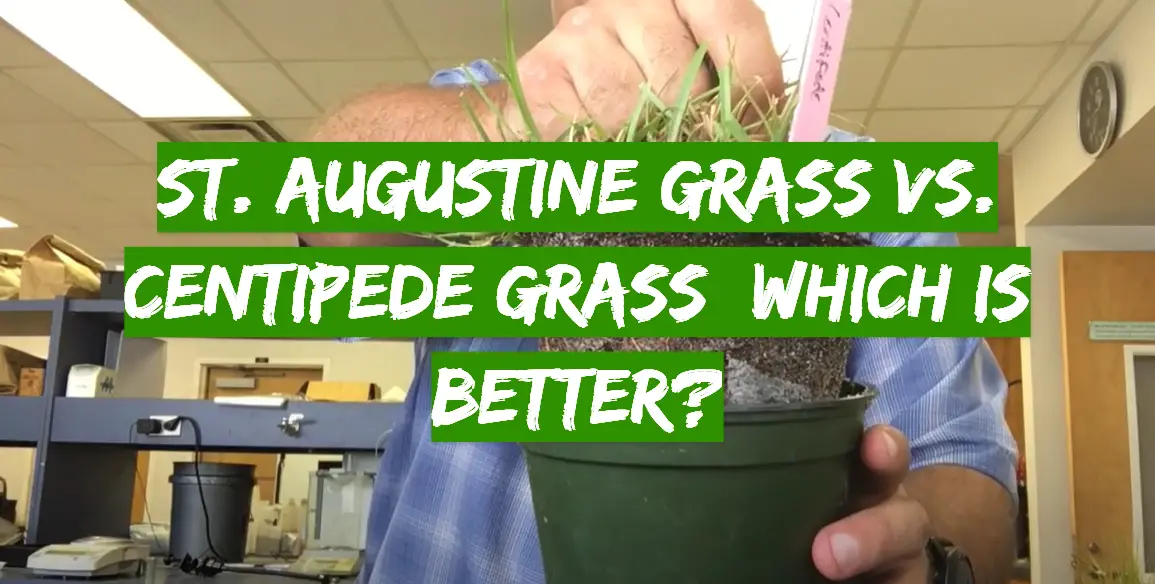



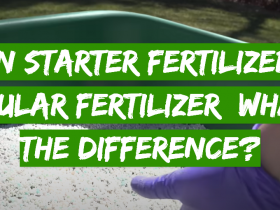
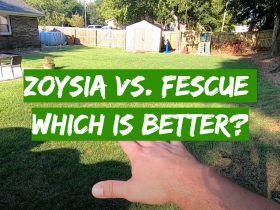
Leave a Reply
View Comments